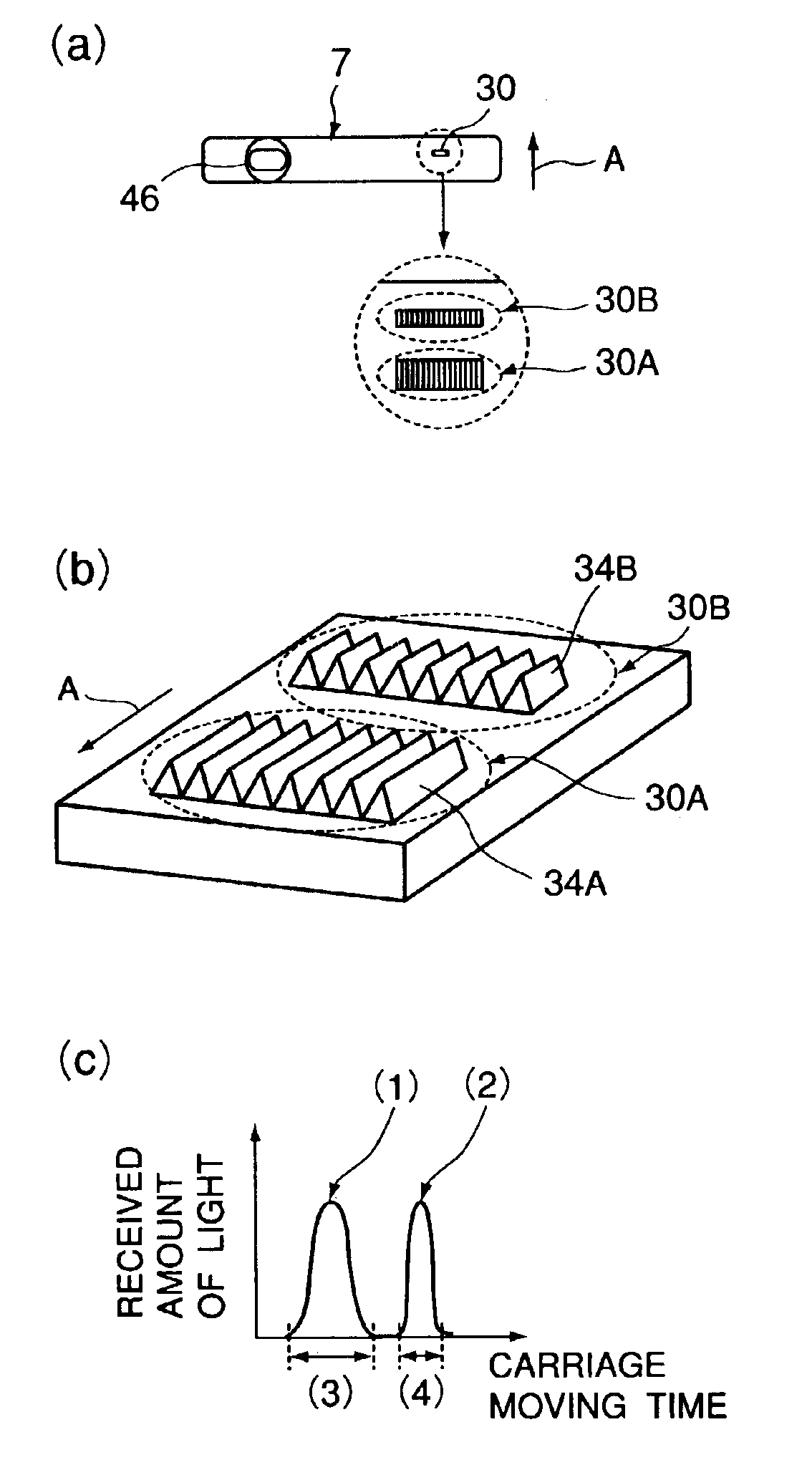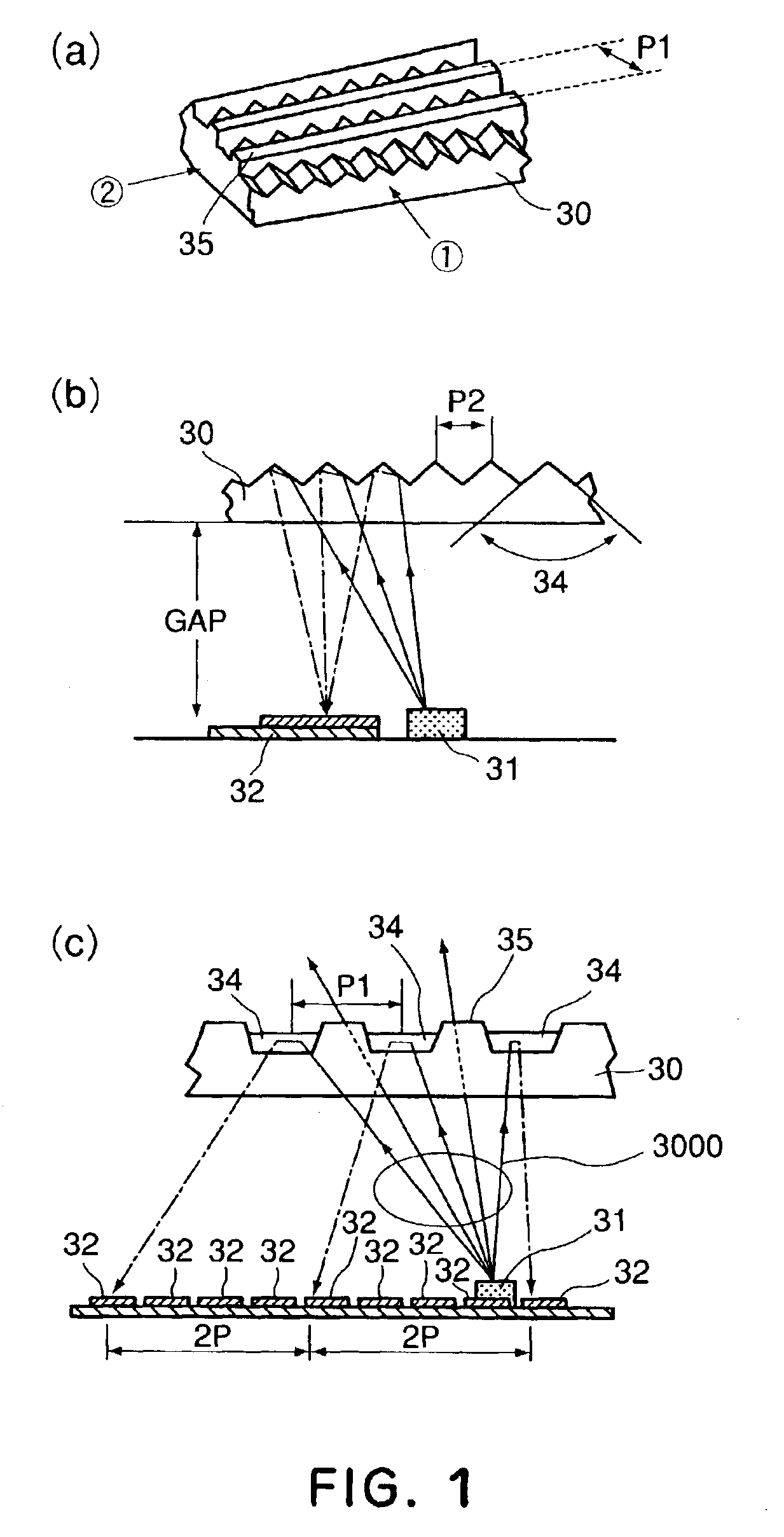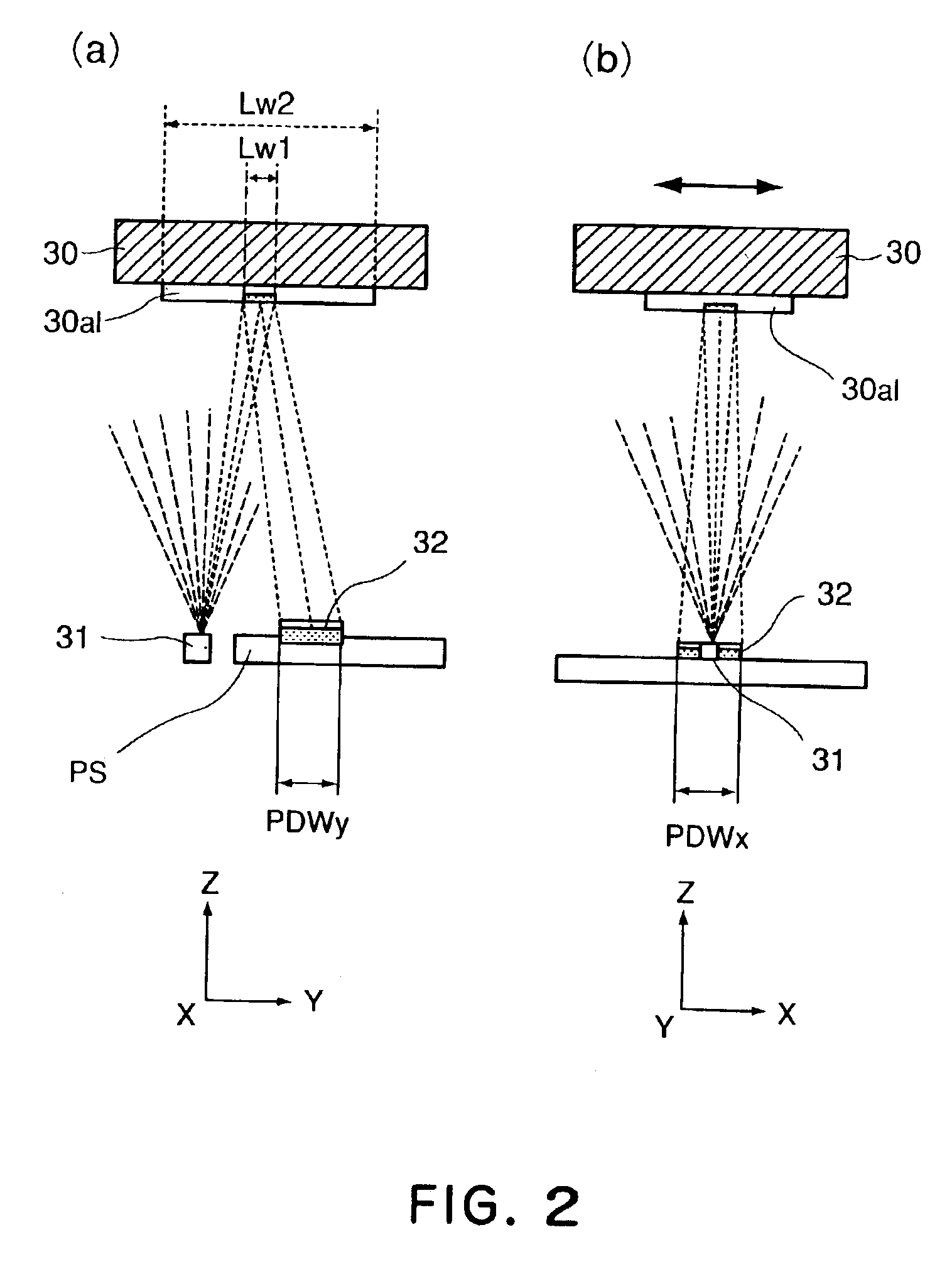Liquid container with identifying means and method for detecting state of mount of liquid container
a liquid container and state detection technology, applied in the field of liquid containers, can solve the problems of increasing the cost of ink container, increasing the cost of ink jet recording apparatus, and unsatisfactory optical properties of resinous substances, so as to reduce the amount of space a reflective member and increase the amount of light a reflective member reflects
- Summary
- Abstract
- Description
- Claims
- Application Information
AI Technical Summary
Benefits of technology
Problems solved by technology
Method used
Image
Examples
embodiment 1
(Embodiment 1)
FIG. 9 is a schematic drawing for describing the first embodiment of a reflective member in accordance with the present invention. FIG. 9(a) is an enlarged view of the roof mirror portion of the reflective member on the bottom surface of an ink container and FIG. 9(b) is a perspective view of the roof mirror portion of the reflective member. FIG. 9(c) is a graph showing the distribution of the amount of the light received by the light receiving side when a liquid container has the first embodiment of a reflective member, in which the roof mirrors are positioned as shown in FIG. 9(b). It should be noted here that FIG. 9 is a perspective view, as seen from diagonally above, of the side of the reflective member, which faces inward of a liquid container as the reflective member is attached to the liquid container. Hereinafter, this embodiment of the present invention will be described in detail.
Referring to FIG. 9(a), the reflective member 30 has first and second roof mirr...
embodiment 2
(Embodiment 2)
This embodiment is a modification of the first embodiment; it is different from the first embodiment in that the first mirror unit is different in the roof mirror depth from the second mirror unit. Next, this embodiment will be described in detail.
FIG. 10 is a drawing for describing the second embodiment of a reflective member in accordance with the present invention. FIG. 10(a) is an enlarged view of the roof mirror portion of the reflective member on the bottom surface of an ink container, and FIG. 10(b) is a perspective view of the roof mirror portion of the reflective member. FIG. 10(c) is a graph showing the distribution of the amount of the light received by the light receiving side when a liquid container has the second embodiment of a reflective member, the roof mirrors of which are positioned as shown in FIG. 10(b).
Referring to FIG. 10(a), the reflective member 30 has first and second roof mirror units (reflective members) 30A and 30B, and is on the bottom wal...
embodiment 3
(Embodiment 3)
This embodiment is another modification of the first embodiment; it is different from the first embodiment in that the first mirror unit is different in the number of roof mirrors from the second mirror unit. Next, this embodiment will be described in detail.
FIG. 11 is a schematic drawing for describing the third embodiment of a reflective member in accordance with the present invention. FIG. 11(a) is an enlarged view of the roof mirror portion of the reflective member on the bottom surface of an ink container, and FIG. 11(b) is a perspective view of the roof mirror portion of the reflective member. FIG. 11(c) is a graph showing the distribution of the amount of the light received by the light receiving side when a liquid container has the third embodiment of a reflective member, in which the roof mirrors are positioned as shown in FIG. 11(b).
Referring to FIG. 11, the reflective member 30 has first, second, and third roof mirror units 30A, 30B, and 30C, and is on the b...
PUM
 Login to View More
Login to View More Abstract
Description
Claims
Application Information
 Login to View More
Login to View More - R&D
- Intellectual Property
- Life Sciences
- Materials
- Tech Scout
- Unparalleled Data Quality
- Higher Quality Content
- 60% Fewer Hallucinations
Browse by: Latest US Patents, China's latest patents, Technical Efficacy Thesaurus, Application Domain, Technology Topic, Popular Technical Reports.
© 2025 PatSnap. All rights reserved.Legal|Privacy policy|Modern Slavery Act Transparency Statement|Sitemap|About US| Contact US: help@patsnap.com



